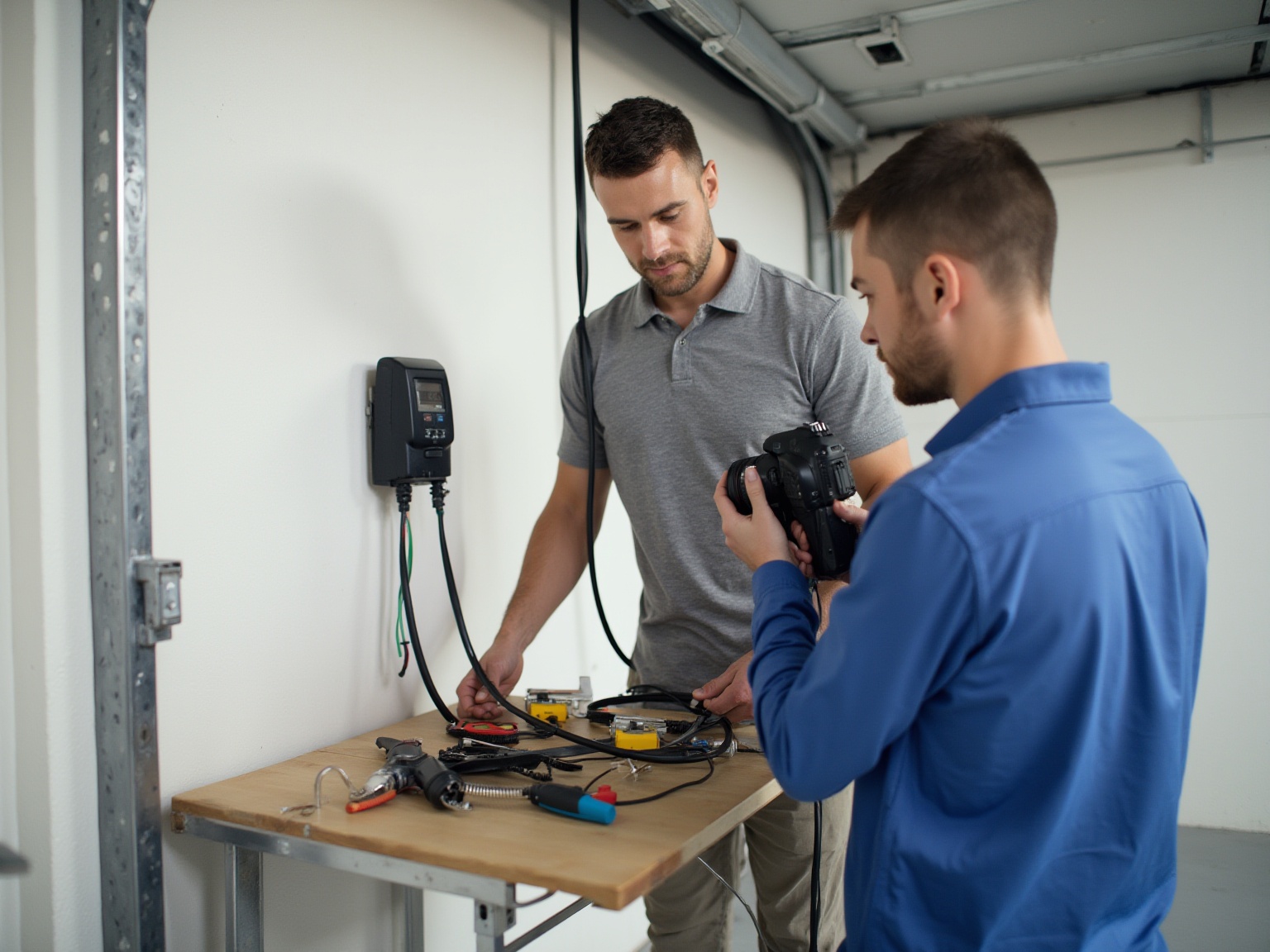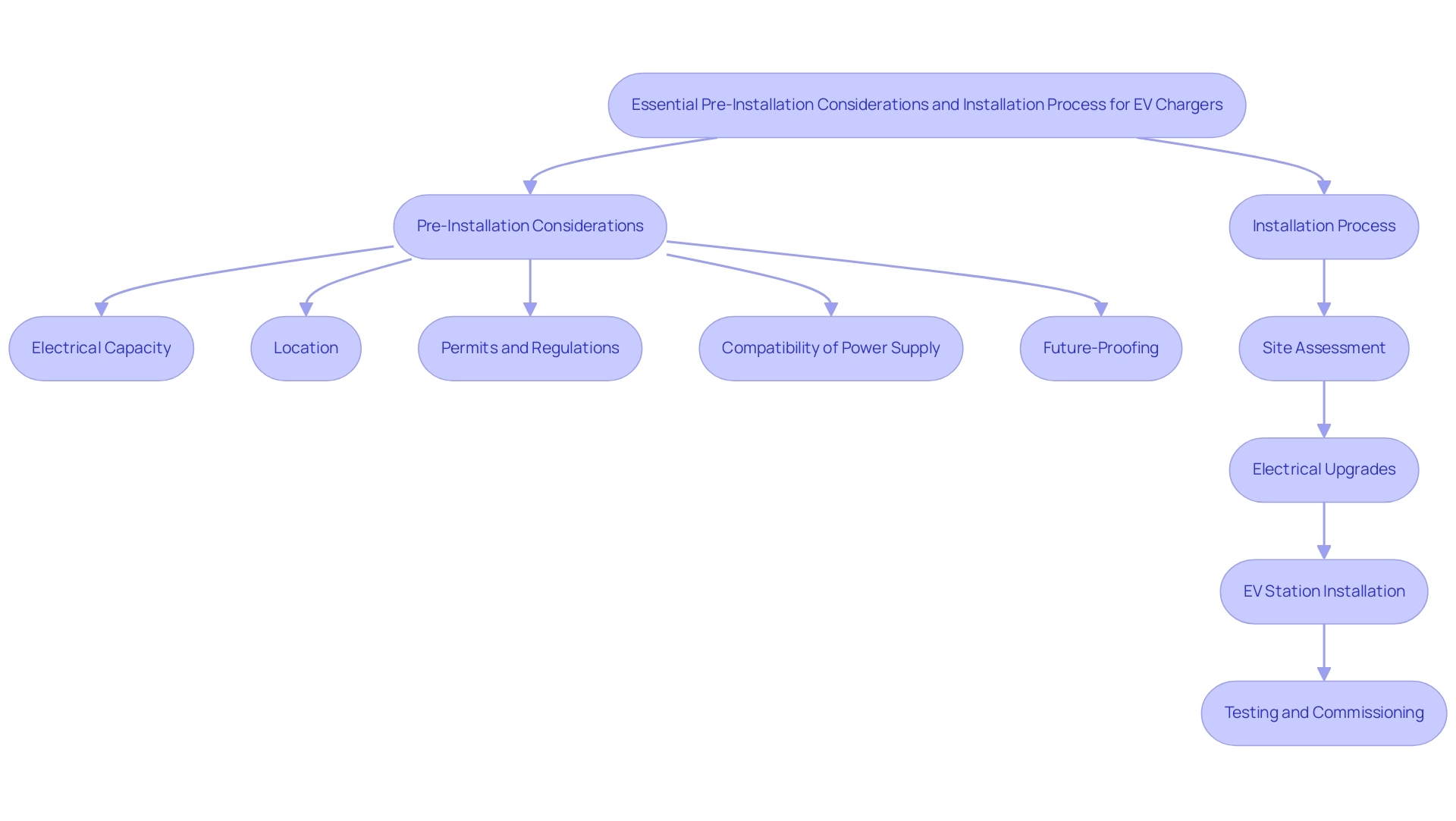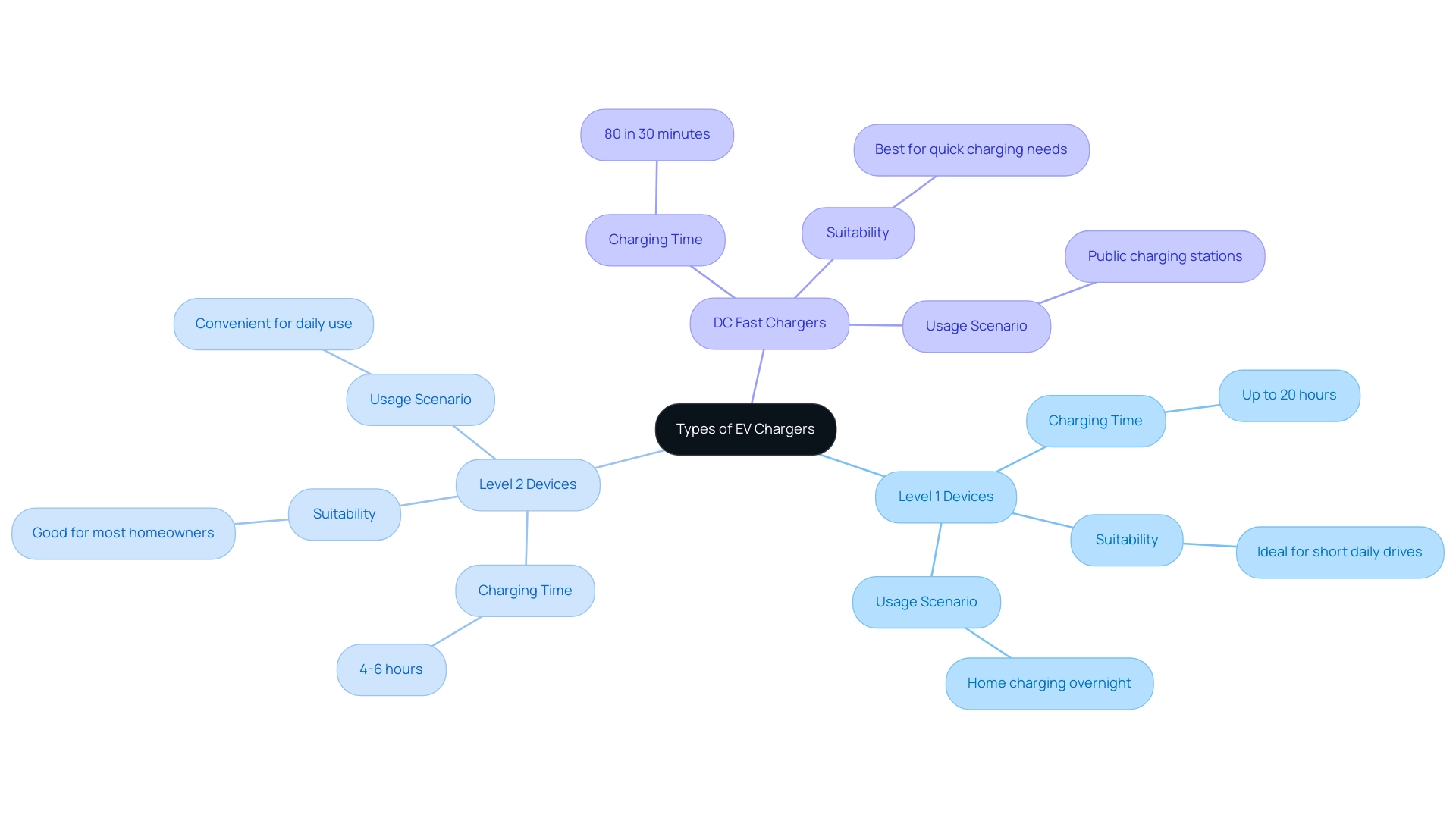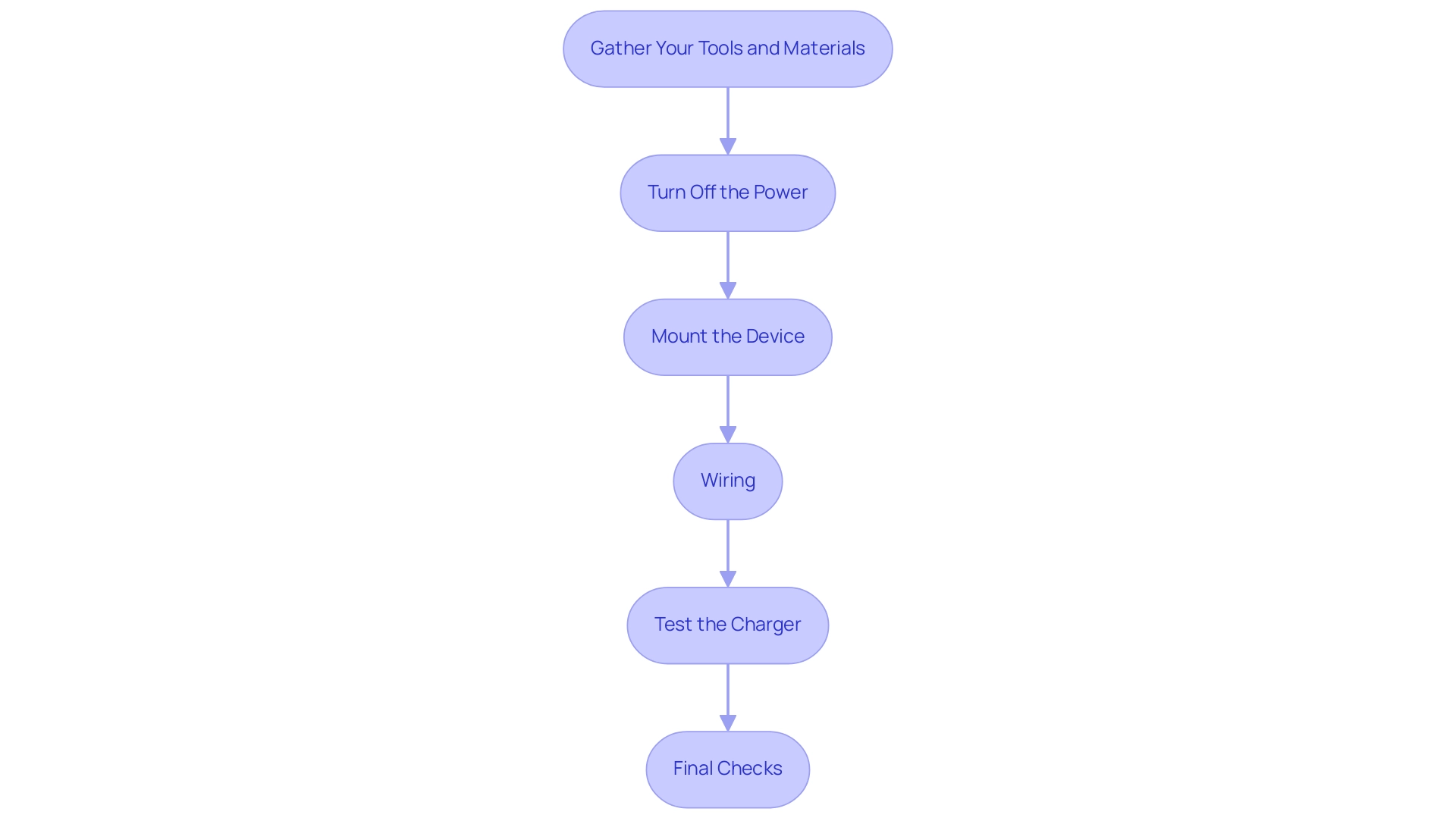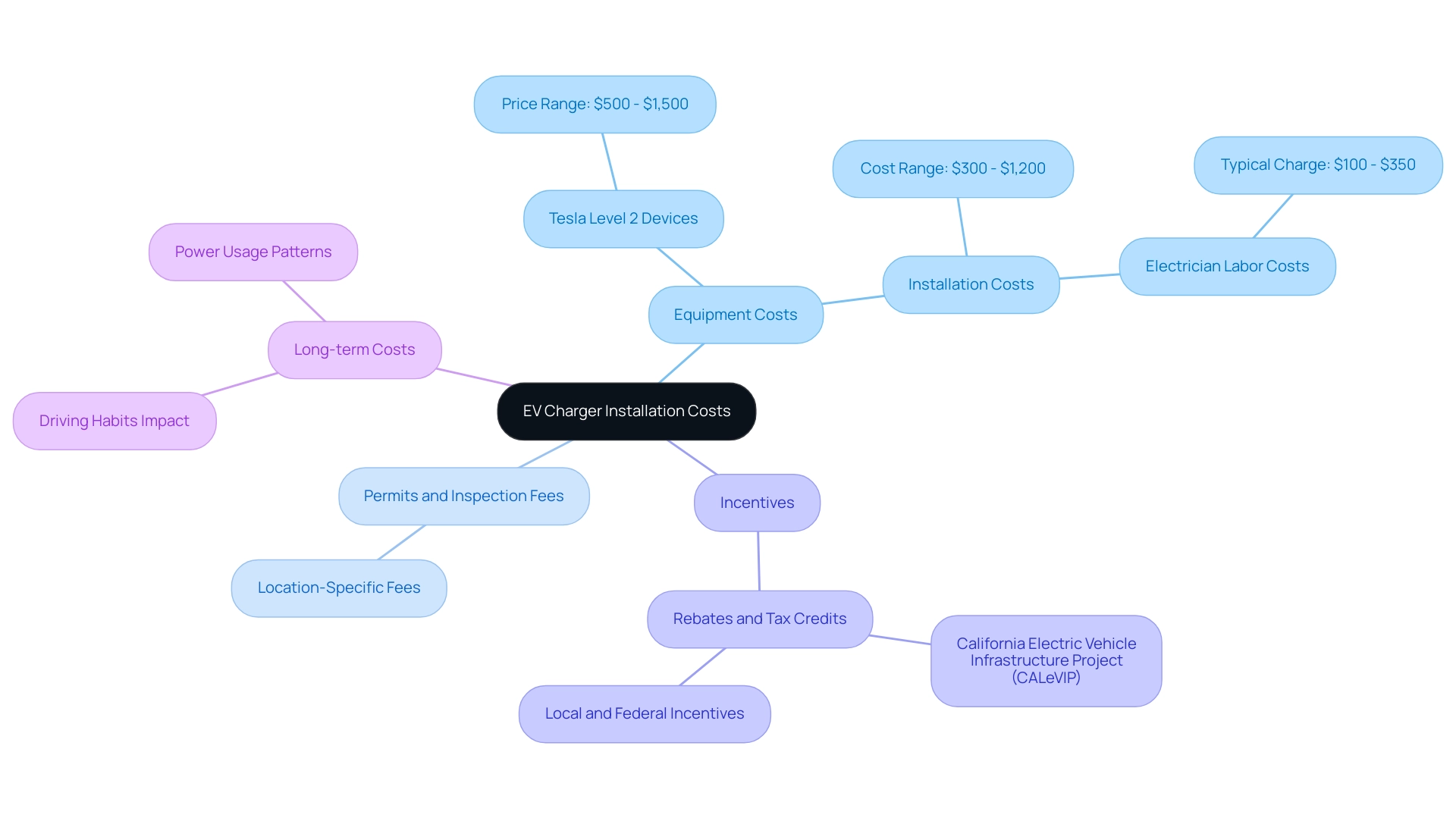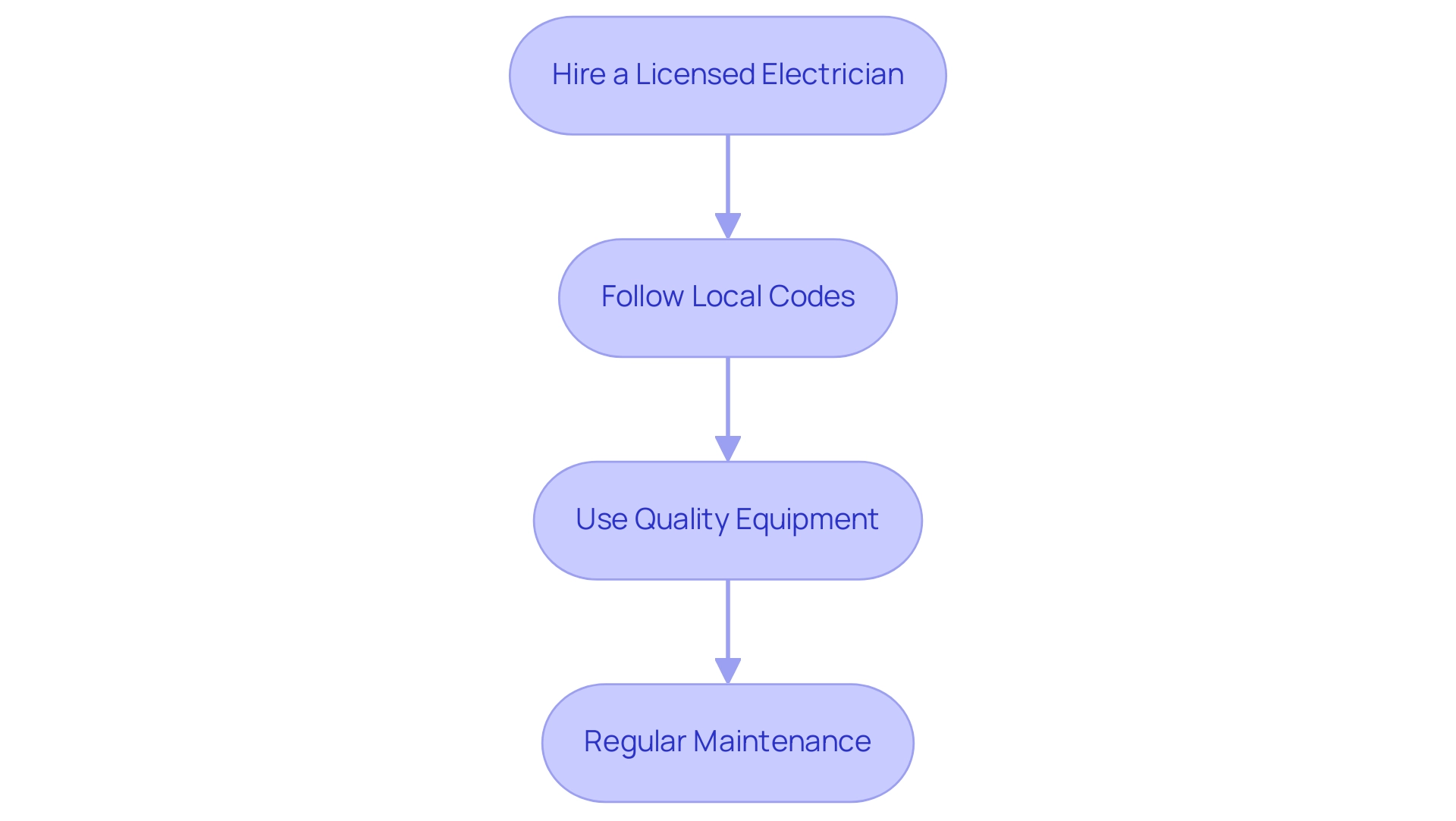Overview
To install an EV charger, homeowners must consider factors such as electrical capacity, charger location, and compliance with local regulations before proceeding with the installation process. The article outlines a step-by-step guide that includes assessing electrical needs, selecting the appropriate charger type, and ensuring safety through proper installation and maintenance practices, emphasizing the importance of consulting professionals for optimal results.
Introduction
As electric vehicles (EVs) continue to gain popularity, many homeowners are considering the installation of EV chargers to enhance their charging capabilities at home. However, diving into this process requires careful planning and consideration of various factors.
From assessing electrical capacity to understanding local regulations, each step plays a crucial role in ensuring a seamless installation. This guide will walk through:
- Essential pre-installation considerations
- The different types of chargers available
- The installation process
Empowering homeowners to make informed decisions that align with their lifestyle and future needs. With the right knowledge and preparation, transitioning to electric vehicle ownership can be a smooth and rewarding journey.
Essential Pre-Installation Considerations for EV Chargers
Before diving into EV charger installation, it’s essential to consider several key factors:
-
Electrical Capacity: Start with a thorough check of your home’s electrical panel. With a recent survey showing that 44% of homeowners do not have a power source, ensuring your system can handle the extra demand of an electric vehicle station is essential. Consulting an electrician for a capacity assessment is a wise move, as an ev charger install may be necessary to support your power requirements.
-
Location: The optimal placement of your device is vital. Ideally, it should be positioned close to your parking area for easy access while ensuring proper ventilation. This not only simplifies your charging routine but also maintains safety.
-
Permits and Regulations: Familiarize yourself with local building codes and regulations regarding ev charger install. Some jurisdictions may require permits or inspections, so doing your homework upfront can save you time and hassle later. As the IEA states, “Policy has an important role to play in fostering infrastructure roll-out,” highlighting the significance of staying informed about regulatory changes.
-
Compatibility of Power Supply: Compatibility is essential when choosing your power source. Ensure that the model you choose meets the specifications for your electric vehicle. Consulting with the manufacturer can offer valuable advice on which power sources are best suited for your vehicle.
-
Future-Proofing: Think ahead! As the electric vehicle sector develops and battery production capacity is anticipated to hit 3.2 Twh by 2030, think about future requirements such as possible enhancements to your vehicle or the addition of more charging stations. Furthermore, by 2035, the share of electricity from chargers other than home chargers is expected to reach almost 45%. Planning your setup with these factors in mind will ensure you’re prepared for the ev charger install that lies ahead.
-
Installation Process: The installation process typically involves several steps:
- Site Assessment: We conduct a thorough assessment of your property to determine the best location for the charging station and assess any electrical requirements.
- Electrical Upgrades: Depending on the existing electrical infrastructure, we may need to upgrade or modify it to accommodate the power station.
- EV Station Installation: Once the site assessment and electrical upgrades are complete, we install the EV station, ensuring it meets all safety and regulatory standards.
- Testing and Commissioning: We rigorously test the charging station to ensure it’s functioning optimally before handing it over to you.
By keeping these considerations in mind, you’ll navigate the process of ev charger install confidently and with ease. If you’re seeking professional support, Powercore Electric is available to assist with a thorough installation procedure that encompasses site evaluation, electrical enhancements, and meticulous testing to guarantee your device is prepared for operation. Feel free to reach out to us at ryan.serrano@powercoreinc.net or call (916) 699-8778 for more information!
Understanding the Different Types of EV Chargers
When it comes to powering your electric vehicle (EV), you’ll encounter three primary types of devices, each with its own unique benefits:
- Level 1 Devices: Imagine plugging your EV into a standard 120-volt outlet—this is what Level 1 devices do! They’re perfect for overnight charging, but keep in mind that they can take quite a while, sometimes up to 20 hours, to fully charge your vehicle. Ideal for those who don’t drive too far daily.
- Level 2 Devices: If you’re seeking a faster choice, Level 2 devices are your best option. They operate using a 240-volt outlet and can fully charge your EV in about 4-6 hours. This makes them the go-to choice for many homeowners, providing a good balance of convenience and efficiency.
- DC Fast Chargers: These high-powered chargers work wonders when you’re in a hurry. They can boost your EV’s battery to 80% in just around 30 minutes. However, they come with a higher price tag and are typically found at public power stations rather than in residential settings.
It’s important to note that by 2030, global lithium-ion automotive battery manufacturing capacity is expected to reach 3.2 TWh, indicating significant growth in the EV market and its power infrastructure. For instance, the BMW i4 (eDrive35) has a battery size of 67 kWh and an estimated DC charge time of 95 minutes, providing a concrete example of power replenishment capabilities. If you’re seeking to have an EV charger installed at your residence, Powercore Electric Inc. provides various services, including professional setup of Level 2 chargers, solar panel setup, and battery backup systems.
These services not only improve your EV power capabilities but also contribute to a more sustainable energy solution for your home. Be sure to check with your state and local governments to determine which regulations apply to your installation. You can reach out to Powercore Electric Inc. at ryan.serrano@powercoreinc.net or call (916) 699-8778 for guidance on choosing an EV charger install that is tailored to your needs.
Selecting the appropriate power supply truly relies on your individual driving patterns and the electrical configuration you possess at your residence. By understanding these options and the broader context of the EV landscape, you can make an informed decision that best suits your lifestyle!
Step-by-Step Installation Process for Home EV Chargers
Installing a home EV charging station can be a straightforward process if you follow these simple steps:
-
Gather Your Tools and Materials: Start by collecting all the necessary tools, which typically include a screwdriver, drill, and any other hardware required for your specific device. Don’t forget the materials, such as the EV device itself, a mounting bracket, and the appropriate wiring.
Turn Off the Power: Safety first! Before you begin installation, make sure to turn off the power at your electrical panel. This step is crucial to ensure a safe working environment.
-
Mount the Device: Following the manufacturer’s instructions, securely attach your device on a wall or post. Be sure to choose a location that’s easily accessible and at a comfortable height for use.
-
Wiring: Now it’s time to connect the power supply to your electrical panel. Depending on your comfort level with electrical work, this step may require the expertise of a licensed electrician to ensure everything meets local codes and safety standards. At Powercore Electric, we perform a comprehensive site evaluation to identify the optimal position for your EV charger install and examine any electrical needs, including possible enhancements to your current electrical infrastructure if required.
Test the Charger: Once all connections are made, turn the power back on and test your new charger with your electric vehicle to ensure it’s working correctly. Our team rigorously tests the power stations to ensure they function optimally.
Final Checks: Take a moment to inspect all connections, making sure everything is securely mounted and safe. If your local regulations require it, follow up with any necessary inspections to confirm compliance. Powercore Electric guarantees that all EV charger install setups comply with safety and regulatory benchmarks.
In Spokane, with around 120 complimentary EV refueling stations available, homeowners can feel more assured about embracing electric vehicles, knowing that refueling infrastructure is accessible. Moreover, by 2030, worldwide lithium-ion automotive battery production capacity is projected to attain 3.2 TWh, a substantial increase from 300 GWh in 2021, highlighting the increasing backing for electric vehicles and the significance of residential power solutions. As one expert noted,
A prompt and efficient installation is completed within two to three hours if we supply all requisite details on time and make preparations following recommendations.
So, with the right tools and a little preparation, you’ll be well on your way to enjoying the convenience of powering your EV at home. Ready to make the switch to electric vehicles? Contact Powercore Electric today to learn more about our EV charging solutions and how we can help you embrace a cleaner, more sustainable future.
Cost Considerations and Available Incentives for EV Charger Installation
When organizing your Tesla EV power source setup, it’s essential to consider several cost factors to ensure a smooth process:
- Equipment Costs: Tesla Level 2 devices typically vary from $500 to $1,500, determined by the features and brand you select. The installation costs for an EV charger install can also vary from $300 to $1,200, largely depending on your existing electrical setup. Corentin Bernard observes that qualified electricians usually charge between $100 and $350 for labor during a standard setup, a crucial factor in your overall budget.
- Permits and Inspection Fees: These fees can differ significantly by location, so it’s wise to reach out to your local authorities to get the specifics for your area.
- Incentives: A fantastic way to offset the costs of EV charger install is by taking advantage of available rebates or tax credits. For Tesla owners, there may be specific incentives available, such as those provided by the California Electric Vehicle Infrastructure Project (CALeVIP). Make sure to research both local and federal incentives, as many states are actively promoting EV adoption and can help lighten the financial load.
- Long-term Costs: It’s important to consider that long-term EV power costs depend on your individual driving habits and power usage patterns. This aspect can significantly impact your overall expenses and should be a vital part of your decision-making process.
As the EV market expands, with Qmerit having installed more than 450,000 EV charging stations across the U.S. and Canada, and models like the 2026 BMW iX SUV showcasing cutting-edge technology and efficiency, now is a great time to explore your options for Tesla charging solutions that align with your eco-conscious lifestyle. Additionally, be aware that different EV models utilize various fast-charging standards, such as Chademo for the Nissan Leaf and CCS for most others, which can influence your setup choices. Understanding these costs and options, especially those specific to Tesla, will empower you to make an informed decision that supports your sustainable energy goals, including the EV charger install.
Ensuring Safety and Compliance in EV Charger Installation
To ensure a safe and compliant setup of your EV charger, here are some friendly tips to guide you:
- Hire a Licensed Electrician: When it comes to electrical work, it’s always wise to rely on the expertise of a licensed electrician. Their expertise guarantees that your setup complies with all required safety standards and regulations. As the President of Qmerit Network puts it, > We’re here to make your electrification journey easy and provide a first-class experience with the highest quality of materials and service.
- Follow Local Codes: Each area has specific building codes and regulations, so it’s crucial to check in with your local building department. These codes are designed to keep you and your residence safe, and they can vary significantly depending on where you live. Additionally, with the rise in electric vehicle adoption driven by government initiatives and incentives from the Inflation Reduction Act, ensuring compliance with local regulations has never been more important.
- Use Quality Equipment: Investing in high-quality chargers and setup materials is key to enhancing both safety and reliability. This upfront investment pays off in the long run by minimizing maintenance issues and ensuring smooth operation. Keep in mind, 80% of electric vehicle refueling occurs at residences, typically during the night, making these setups essential for secure refueling practices. Plus, charging at home can lead to significant cost savings compared to public charging stations.
- Regular Maintenance: After your device is installed, don’t forget about it! Regularly check the charger and electrical connections for any signs of wear or damage. Scheduling professional inspections can help you stay in compliance with the latest safety standards and keep everything running smoothly. As emphasized in case studies, confirming adherence to relevant state and local regulations is crucial to guarantee the safety and legality of your EV charger install in both workplace and residential settings.
By following these tips, you’ll not only ensure safety but also appreciate the peace of mind that accompanies a dependable electric vehicle power setup at your residence. Plus, with Powercore Electric Inc.‘s services, including solar panels and battery backups, you can enhance your home’s energy efficiency while charging your vehicle conveniently and affordably. For more information or to schedule a consultation, contact Powercore Electric Inc. at ryan.serrano@powercoreinc.net or call (916) 699-8778.
Conclusion
Transitioning to electric vehicle ownership is an exciting journey, and installing an EV charger at home is a vital step in that process. By carefully considering essential pre-installation factors such as:
- Electrical capacity
- Location
- Compatibility
homeowners can set the stage for a smooth installation. Understanding the different types of chargers available—from Level 1 to DC Fast Chargers—enables informed choices that align with individual driving habits and lifestyle needs.
The installation process, while straightforward, requires attention to detail and safety. Whether gathering tools, mounting the charger, or ensuring compliance with local regulations, each step is crucial to creating a reliable and efficient charging setup. Additionally, being mindful of cost considerations and exploring available incentives can ease the financial burden of installation, making electric vehicle ownership more accessible.
Ultimately, the goal is to empower homeowners to embrace the future of transportation with confidence. By prioritizing safety, compliance, and proper planning, the transition to electric vehicles becomes not just feasible but also rewarding. With the right support and information, homeowners can look forward to the convenience of charging their vehicles at home while contributing to a more sustainable future.


